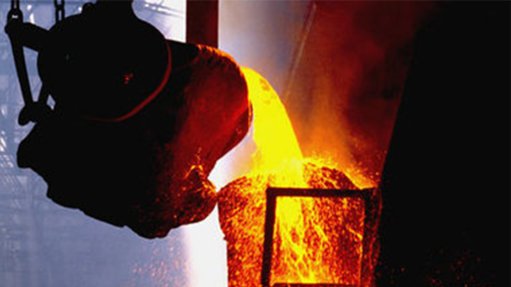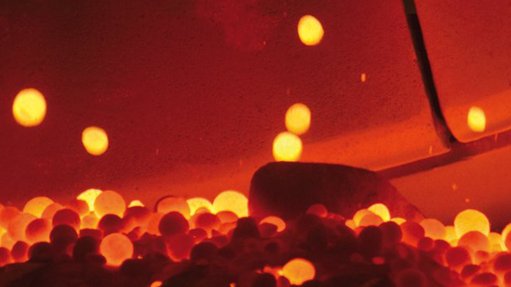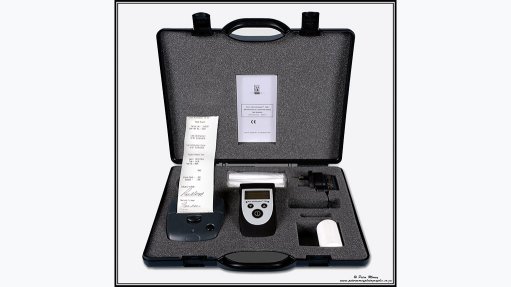South Africa’s lack of urgency in introducing cadastre system decried
Orion Minerals CEO Errol Smart offered the familiar refrain of South Africa’s mining industry needing a functional and accurate cadastre.
“We cannot manage our minerals with a GIS system,” he said during the Q&A session following his keynote address at the 2022 Council for Geoscience (CGS) Summit late last month.
He expressed ongoing frustration with the fact that “some of the most commercially successful mining cadastre developers in the world are based here in South Africa, and yet we don’t have a cadastre”.
Moreover, the Department of Mineral Resources and Energy (DMRE) is only negligibly closer to replacing its defunct system, as it published an invitation to tender earlier this year.
“Botswana started speaking about a cadastre at the same time that we started speaking about a mining cadastre. We’re still speaking about speaking about speaking, and Botswana has an active cadastre.”
Similarly, there has been very little progress in terms of the six points outlined in the exploration reform proposed by the CGS and Minerals Council South Africa.
“The CEO of the CGS and I sat in a room two years ago, trying to answer the question about what we need to do [to attract exploration investment and reignite exploration]. We came up with six points. Those six points are still not acted upon,” he said.
Aside from implementing a functional cadastre and halving licensing times, one of the six points is the need to address ambiguities in the law.
“The Minister stands with me on every stage around the world, and he’ll tell people that it is not sensible to have BEE overlay on prospecting rights. He makes a clear statement, regularly on stage, that BEE is not required for prospecting. “And I go to the international investment community, and I tell investors that BEE is not required for prospecting in South Africa. I have not received a single prospecting right that hasn’t had an insistence on Section Two D, in compliance with the new Minerals Charter. That creates uncertainty and unhappiness among investors.”
He also asked that the DMRE take responsibility in terms of Section 54 and help address the impasse between landowners and prospectors – landowners who are sterilising prospecting opportunities.
Smart stated that unless action was taken, South Africa would continue to lose out on investment to neighbours like Botswana and Namibia, not because they have better geology, but because they have a better administrative systems.
Beneficiation
Smart noted that in South Africa everybody “waffles on about beneficiation”, with some looking to increase metals smelting capacity, even though the challenges plaguing State-owned utility Eskom all but guarantee that it will never be able to power said smelters.
“To me that’s not where the value is – the real value is understanding that value chain of a battery precursor.”
He provided the example of cellphones, noting that the 3 μm to 6 μm iron micro flakes that are used in a single phone cost the cellphone manufacturer as much as all of the cobalt found in the phone.
“Iron, currently [around] $100/t, but the same stuff goes into your cellphone for microwave attenuation and is trading at $100 000/t. The nickel that’s used isn’t the big ingots, its microfibres. That’s what we need to be doing.”
He cited technologies and innovations that open up other avenues for beneficiation. “The nickel in your cellphone comes from massive plants where they take a big lump of nickel and go gasify it to produce little microbeads.”
He said that similar beneficiation activity can occur using concentrates.
“So, there are two different technologies, but they happen the same way, almost identical reactor vessels. You’ve got a vaporisation vessel, a bunch of pipes and a distillation tower. It’s the same stuff that Sasol does, the same process, the same technology, the same reactor, and it’s done around the world on a huge scale.”
He noted that pursuing these technologies and beneficiation strategies would be viable and cost-effective, and would not put undue strain on Eskom and could help kick-start the circular economy.
Article Enquiry
Email Article
Save Article
Feedback
To advertise email advertising@creamermedia.co.za or click here
Announcements
What's On
Subscribe to improve your user experience...
Option 1 (equivalent of R125 a month):
Receive a weekly copy of Creamer Media's Engineering News & Mining Weekly magazine
(print copy for those in South Africa and e-magazine for those outside of South Africa)
Receive daily email newsletters
Access to full search results
Access archive of magazine back copies
Access to Projects in Progress
Access to ONE Research Report of your choice in PDF format
Option 2 (equivalent of R375 a month):
All benefits from Option 1
PLUS
Access to Creamer Media's Research Channel Africa for ALL Research Reports, in PDF format, on various industrial and mining sectors
including Electricity; Water; Energy Transition; Hydrogen; Roads, Rail and Ports; Coal; Gold; Platinum; Battery Metals; etc.
Already a subscriber?
Forgotten your password?
Receive weekly copy of Creamer Media's Engineering News & Mining Weekly magazine (print copy for those in South Africa and e-magazine for those outside of South Africa)
➕
Recieve daily email newsletters
➕
Access to full search results
➕
Access archive of magazine back copies
➕
Access to Projects in Progress
➕
Access to ONE Research Report of your choice in PDF format
RESEARCH CHANNEL AFRICA
R4500 (equivalent of R375 a month)
SUBSCRIBEAll benefits from Option 1
➕
Access to Creamer Media's Research Channel Africa for ALL Research Reports on various industrial and mining sectors, in PDF format, including on:
Electricity
➕
Water
➕
Energy Transition
➕
Hydrogen
➕
Roads, Rail and Ports
➕
Coal
➕
Gold
➕
Platinum
➕
Battery Metals
➕
etc.
Receive all benefits from Option 1 or Option 2 delivered to numerous people at your company
➕
Multiple User names and Passwords for simultaneous log-ins
➕
Intranet integration access to all in your organisation


















